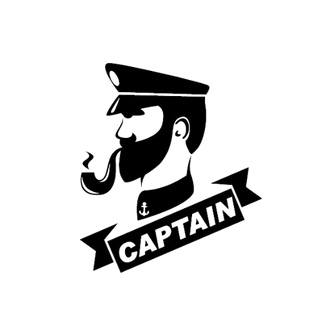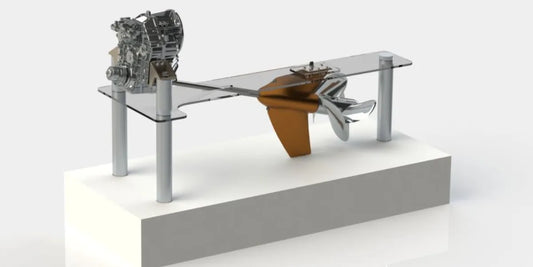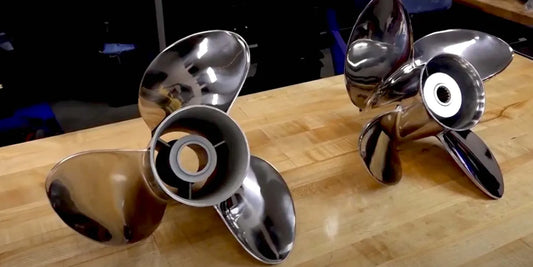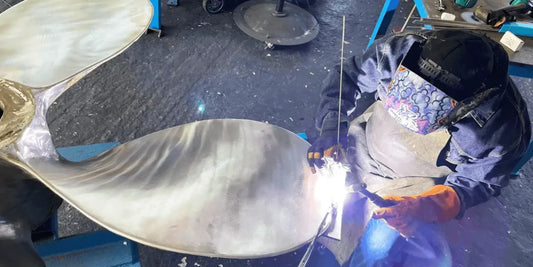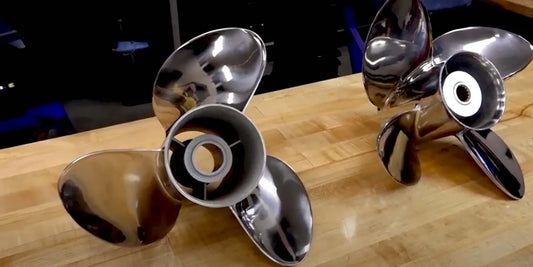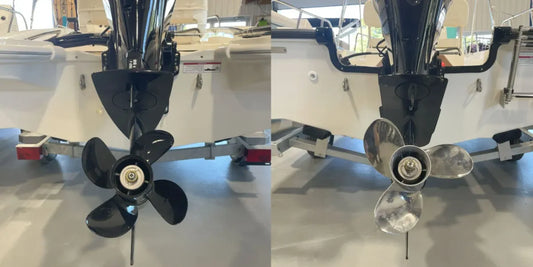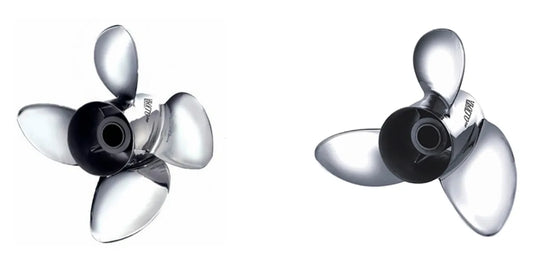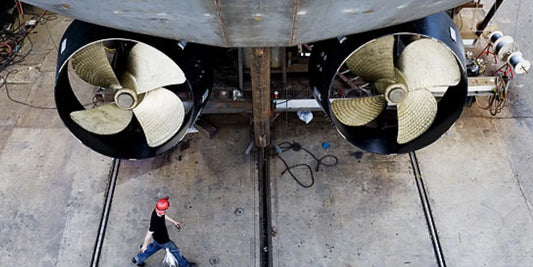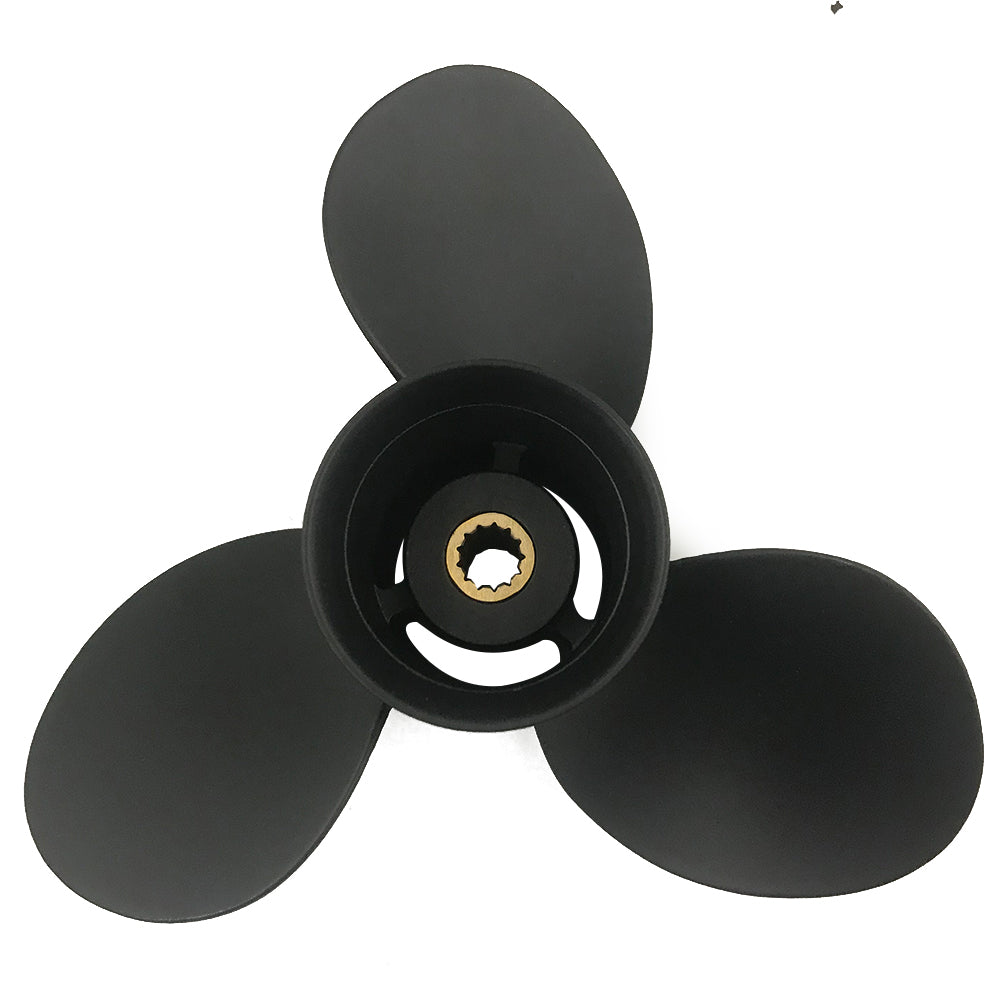The maritime industry stands poised on the threshold of a complete technological revolution, with new propeller designs promising to be the cornerstone of unforeseen advancements in performance. As global markets demand faster and more efficient boats, soaring propeller innovation becomes imperative to create higher speeds while ensuring that fuel efficiency and environmental parameters are not compromised. This article focuses on the role that such advanced propellers will play by 2025 and thereby discusses how the future of boating is reframed by new-age materials, computational fluid dynamics (CFD), and completely radical designs. One way or another, whether as a marine lover, a boat maker, or somebody interested in any tech, this discussion shall unfurl the light on the speed-and-efficiency future of water with which to stay ahead in this fast-moving industry.
Understanding Propellers: The Heart of Boat Speed

What is a Boat Propeller?
The mechanism behind the boat propeller is simply the conversion of rotational motion into thrust, which then thrusts the boat forward against the water. The propellers act on the water by rotating and the series of angled blades present on them create a pressure on one side that moves the boat in the forward direction. Generally, the materials for building propellers are stainless steel or aluminum, which offer strength together with resistance to water and corrosion. On other hand, more modern types of materials such as carbon composites are being used to achieve a better balance between efficiency and weight. Certain technical parameters affect propeller performance---diameter, pitch (p), number of blades, and shape of blades. For example, a large-diameter, low-pitch propeller that can provide good thrust at low speeds is perfect for heavy boats, whereas small sizes with high-pitch designs maximize speed for lightweight boats. Understanding these parameters would be crucial for maximizing performance, fuel efficiency, and boating requirements.
Boat Propeller Types: Inboard vs. Outboard
Colloquially, knowing whether a prop is inboard or outboard plays an important role in choosing a suitable prop for one's boat.
Inboard Propellers are fitted under the hull, attached directly via a prop shaft to an inboard engine, and thus they tend to be bigger diameter-wise and used where heavy power is needed-usually heavy cruising vessels or bigger fishing boats-where it means a load. Outboard idlers do well for long-distance travelling, so they're very durable. An inboard prop gets placed in a particular spot and should allow for a slick ride with efficient fuel economy. Servicing is typically cumbersome owing to its placement-it may require special equipment or even pulling the hull out of the water.
Don't mistake it for anything else; outboard propellers are simply those attached to an outboard motor that is mounted aft on the transom of any boat. Outboard propellers are multi-purpose; they are manufactured to accommodate different boats and applications and come in many sizes and designs. Outboard propellers are generally used for smaller-type fishing, recreational watercraft, and for speed emphasis due to their light setup and easy maintenance-capability. Mutually advanced features in outboard props such as variable pitch adjustments or corrosion resistance are witnessed in the best ones to make them highly efficient in fresh and saltwater alike.
Choosing between inboard and outboard propellers generally comes down to boat size, their intended use, and maintenance preferences. Maneuverability and shallow-water access usually go to those favoring an outboard, while inboards race off with the larger, powerful vessels looking to feather stability and efficacy.
How Design of Propeller Can Affect Speed and Efficiency
Depending on the propeller design, vessel propulsion can affect speed, fuel economy, and performance for the vessel. Blade parameters such as shape, pitch, diameter, and the number of blades are crucial in the operational mechanism of watercraft propulsion. For example, greater blade pitch would provide greater thrust for high speed, though it might require more engine power. On the other hand, low-pitch starts would truly be great for acceleration and towing-type work, providing more torque at low speeds.
The number of blades is an important feature to examine. Larger propeller blades correspond to greater drag, and hence less speed potential. Additional blades provide stability and smoothness; this feature is most suitable for rough water conditions or heavy load. Diameter also defines the performance of the propellers; higher diameter propellers act as sound-producing propellers and apply great thrust to heavier boats moving slowly, whereas small diameters are suitable for lighter boats looking to achieve speed.
Material composition further impacts both performance and endurance. Strength and little flex, stainless steel propellers are known for that, qualities that enable them to absorb energy efficiently and operate with precision at high rpm. Aluminum-propellers, on the other hand, while less expensive, are better suited to casual and recreational boating. Advancements in the technology of propellers have led to variable pitch designs and coatings that increase durability and allow for versatile performance, essentially catering to every possible boating purpose.
Once someone comprehends how the characteristics of a propeller interact, they will be able to select the right combination of speed, efficiency, and operational needs so that the boat performs in optimal conditions for varying circumstances.
Materials Matter: The Case for Stainless Steel and Aluminum Propellers

Benefits from Using Stainless Steel Propellers
Stainless steel propellers are usually known for durability, working capacity, and long-term value. Made of excellent-grade stainless steel, they are highly resistant to corrosion, which makes it very suited for both fresh and salt water. This material is considered much stronger than the aluminum, thereby allowing a slimmer blade design to reduce drag and improve hydrodynamic efficiency. A well-balanced blade design contributes toward acceleration and uptime in top speed; this is mostly from enhanced performance for high-powered craft.
Another important consideration is the propellers' ability to maintain structural integrity in adverse conditions. The stainless steel propellers provide greater resistance against impacts and deformation, which is an important consideration when the boat must negotiate rocky or debris-filled waterways. Their polished finish can also reduce surface friction, thereby increasing mileage and improving handling. For those who want to be sure that the performance-plus-longevity combination pays cost-wise, stainless steel can truly be considered a cost-effective option.
When to Use Aluminum Boat Props
An aluminum boat propeller is a great choice among the recreational boaters owing to the trade-off between cheapness and versatility. These are lighter but sturdier and hence suitable for boats that function in either calm waters or moderate sea conditions. Aluminum propellers usually cost much less than their stainless steel counterparts, so they become the preferred option for the beginners or those working on a budget. When repair is considered, aluminum props can be repaired faster and cheaper if minor damage occurs.
Compared with higher-horsepower engines, aluminum propellers are particularly fitted for lower-horsepower engines since a lighter prop would put less strain on the motor. An aluminum prop is the chance to minimize damage in case the boat is launched frequently on sandy or shallow areas, since the replacement of an aluminum prop is cheaper than one made of high-end material. Although aluminum props are less sturdy than stainless steel because of their lesser strength, manufacturing techniques have evolved to be able to produce aluminum props sturdy enough for efficient daily use for almost any boating application.
Performance Comparison: Stainless Steel vs Aluminum
Strength, efficiency, and application suitability are several criteria upon the differences in performance between stainless steel and aluminum propellers. Stainless-steel propellers are significantly stronger than aluminum propellers and, hence, can retain their shape and performance even under the greatest stress. Stainless steel, by reason of its great resistance, attracts use for high speed boating or in demanding water conditions, giving greater performance consistency, and minimal deformation over time.
Aluminum propellers, however, attract recreational boaters or those with lighter crafts and less HP engines as they are lighter and less expensive. Though aluminum propellers are not as strong as stainless steel ones, recent enhancements in manufacturing techniques have improved their longevity and performance, even under trying conditions.
Torque and acceleration distinguish between the two. On the other hand, stainless steel projects rigidity to harness better torque and guarantee acceleration, which is preferable for somebody inclined in building to speed and fuel efficiency. In comparison, aluminum at low speeds works well, with flexing setting in to decrease aluminum's performance when thrust loads reach their higher end. Hence slight differences render aluminum for casual use while stainless steel is more chosen by the performance aficionado and marine professional.
Karen agreed that such factors as type of water and frequency of use have to come into consideration. Corrosion resistance, especially to saltwater, in which all else gets diminished rapidly, is high for stainless steel. Aluminum presents an economical and efficient solution to satisfy the basic needs on the other hand in case of infrequent or freshwater boating.
Ultimately, the choice between stainless steel and aluminum often hinges on individual requirements, including budget, boating style, and environmental considerations. For long-term investment and optimal performance, stainless steel proves to be unparalleled, while aluminum strikes a balance between value and functionality for more general applications.
Top Propeller Brands and Models to Watch

Volvo Penta: Propeller Innovation
From the market perspective, Volvo Penta has maintained the status of industry leader by virtue of being front-runners in the design and performance of propellers. Using precise measures in engineering and complex hydrodynamic testing, Volvo Penta has been creating propellers that save fuel, reduce vibration, and also last longer than any other types. One such stellar innovation is their own Forward Drive(FWD) system for wake surfing optimization on the One side and passenger safety due to the propellers being lowered below the boat on the other.
The dual propeller types ensure better handling and acceleration, suitable for an array of watercraft applications that range from leisure boating to high-performance vessels. Materials involved in their manufacture, primarily marine-grade stainless steel, offer the utmost degree of resistance to corrosion even in the severe saltwater environment. Due to heavy investments in R&D, Volvo Penta propellers are considered to be among the most reliable and efficient in the entire boating industry.
Mercury Bravo and Acme: Names for Speed
The Mercury Bravo and Acme propagate their fame as propellers of remarkable application, especially where speed and answerability matter most. The Mercury Bravo family is geared toward high horsepower applications and provides unrivaled acceleration and smooth handling in both low and high speed ranges. It is made for durability and its unique blade geometry optimizes water flow for maximum thrust.
Likewise, Acme propellers share that hallmark of precision engineering with superior performance in wakeboarding, waterskiing, or other high-speed aquatic sports. They are manufactured with CNC machining technology, which guarantees every propeller is built with accuracy so that it almost eliminates vibration and increases fuel efficiency. These two characteristics, plus speed, reliability, and craftsmanship, make Mercury Bravo and Acme favorite brands among boaters.
Taking a Look into the Models Enertia Eco and Spitfire X7
The Enertia Eco and Spitfire X7 bring in the forefront of innovational boating efficiency and performance. The Enertia Eco, made with stainless steel for durability and fuel efficiency, has an advanced blade geometry designed to reduce drag and increase speed. In terms of fuel economy, this model shines without compromising on top-end performance. Hence it becomes the preference for long-distance boat cruises or environmentally minded boaters.
Another distinguishing feature of the Spitfire X7 is its four-blade configuration, afforded with the greatest acceleration and beyond-the-midrange performance. Resilience even under situations of high torque is nurtured by the high-strength X7 alloy construction, which also results in extreme durability amid harsh conditions. The Spitfire X7 offers an improved grip and fluid handling compared to traditional aluminum propellers, granting precision control through the variability of water conditions.
Both models thus embrace state-of-the-art technology and engineering, following design principles that maximize performance and fuel efficiency. If one should prioritize eco-friendly function or pure power, these propellers range through boating considerations of all kinds. They not only manage to provide a better boating culture but also aim to meet today's sustainability and reliability needs.
Choosing the Right Prop for Your Boat

Factors To Consider While Selecting a Boat Propeller
To select the proper propeller for your particular application is essential in making sure that your vessel works fine, is fuel-efficient, and guarantees smooth boating. However, there are some very important considerations to evaluate to make sure that the propeller fulfills its intended function:
Material of PropellerPropellers are usually made of aluminum and stainless steel, each with its advantages. Aluminum propellers are light in weight and are inexpensive; thus, they are meant for the casual boater. Stainless steel propellers, on the other hand, are tough, damage-resistant, and give superior performance in really taxing conditions.
Diameter and Pitch: The diameter of this propeller is defined as the total width of the circle created by the rotating blades. Bigger diameter is considered to produce more thrust, efficient enough for heavy boats or towing. Pitch is a measurement of how far the propeller moves in one complete rotation. Low-pitch propellers accelerate faster and hence give a faster speed at lower RPMs, whereas high-pitch propellers are made for higher top speeds.
Number of Blades: This helps to determine the propeller's performance, as well as smoothness. The three-blade propeller is the most common because it's a compromise between speed and efficiency. Four-blade propellers, however, deliver higher maneuverability, less cavitations, and better performance under load; hence they are excellent for tasks like wakeboarding with heavy cargo.
Boating Purpose and Load: Depending on how you use the boat, the type of propeller varies. A high-thrust propeller works well for slower speeds and heavier loads such as fishing or barges. On the other hand, high-performance propellers are best for speedboats that are into agility and velocity during watersports.
RPM Range Compatibility: Whatever engine you use specifies its manufacturer-recommended range of RPM for optimum execution. Choosing a propeller that falls in this range would therefore guarantee that the engine performs efficiently without taxing it after all it protects against unwarranted wear that could take place over time.
Cupping and Rake: The cupping is a slight curvature along the trailing edge of the blade which may give more grip in the water and reduce slippage. The rake angle is an angle away from the hub at which the blades are tilted; this lift also influences fuel consumption on high-speed conditions.
Water Condition and Environment: From freshwater lake cruising to deep-offshore or shallow coastal drifting, it is all an environmental issue determining the right propeller for a particular place. Durable materials in construction, and perhaps a somewhat rough design, would go a long way in minimizing damages in the rocky debris waters.
Thanks to the keen analysis of such factors and picking one that best suits your boating needs, you are assured of good performance with excellent propeller and engine life.
OEM vs Aftermarket Options: What You Should Know
The first distinction between OEM and aftermarket propellers is the best choice for your vessel. OEM propellers are made by the original engine manufacturer. Ideally, such propellers would be perfectly compatible with the engine and focused entirely on reliability. These options also tend to be subjected to very rigorous testing and thereby guaranteeing a performance resembling factory specifications on most setups. The downside is that they will cost more in some cases than alternative options.
On the other hand, aftermarket propellers manufactured by third parties provide a variety of choices in terms of price, materials, and performance features. Many aftermarket choices employ innovations in design and materials and compete on quality and price. For example, some brands produce high-performance propellers for specific activities, such as watersports or fishing, while others focus their propellers toward durability in harsh conditions such as saltwater.
Statistical evidence from quantitative marine industry reports reveals that aftermarket propellers could offer a 10 to 30 percent cost reduction depending on the model, some further outperforming the esteemed OEM products under niche conditions. Meanwhile, compatibility is Paramount for aftermarket choices; should an incompatible propeller be fitted, there could arise losses in efficiency or, at worst, damage. But ultimately, it will be a matter of your price range, your boating style, and what your marine vehicle really demands. So, start with loads of research, then ask the experts for their wisdom on finding the best mix of price and performance.
Tips for Matching Your Prop to Your Boat's Engine
Selecting the right propeller for your boat’s engine will determine much of its performance, fuel efficiency, and durability. Here are some crucial tips to help you choose wisely:
Understand Your Engine Specifications: Each engine has recommended RPM limits chosen for optimum performance. Hence, your propeller must keep your engine running in this RPM range to prevent overloading the engine or under-utilizing its power. Check the engine manual for specific RPM limits for your engine and choose a propeller that suits your engine.
Choosing the Correct Pitch: Propeller pitch is the distance a propeller would theoretically move through the water in one revolution. A lower pitch prop provides greater acceleration and pulling power-the prop-type used for water skiing or wakeboarding-but trades this away for top speed. In contrast, a higher pitch is better for top speed but may compromise power at low RPMs. Analyze the general application you anticipate for your boat and use this to guide the pitch you select.
Calculate Blade Count and Style: The number and design of the blades affect how the propeller interacts with water. Three-blade propellers are considered best for speed and general purpose, while four- or five-blade options emphasize stability and acceleration. Cup and rake angles can also influence fuel economy, hole-shot performance, and handling-keep these factors in mind depending on your boat's configuration and operating environment.
Check Materials: Between your options, propeller materials greatly affect durability and performance. Aluminum propellers are a cheap option and lightweight but do tend to wear quicker in adverse conditions. Stainless steel, by contrast, provides greater strength, better speed retention, and long-term value for more demanding settings.
Adjust for Load and Boating Conditions: Propeller performance is influenced by factors such as the weight of passengers, gear, and fuel, as well as water conditions. If you often boat in choppy waters and carry heavier loads, a higher-durability propeller with optimized thrust may be required. Testing out different options on the water or consulting an expert can always help you in this matter.
Regularly Monitor and Maintain Your Prop: Even the best propellers need regular attention for maximum longevity and performance. Always observe for any wear, dents, or corrosion after a trip, particularly when working in a saltwater environment. Repair or replace on time to keep your engine in good shape and fuel-efficient.
Following these considerations in choosing your prop will maximize your engine potential and offer you the smoothest boating experience ever.
Future Trends in Boat Propeller Technology

Innovative Designs Set to Change Boating by 2025
When considering where boat propeller technology will be in 2025, it is clear that innovation is pushing us towards more efficient, greener, and high-performance solutions. Advanced materials are one big trend I see here. Manufacturers are experimenting with lightweight composites, carbon fiber, and hybrid materials that reduce weight while enhancing durability and corrosion resistance. In other words, the propellers are now lighter than ever, yet stronger, and they bring greater fuel efficiency and engine performance. Because of this, a new demand is gripping the eco-friendly boat manufacturing: reduce environmental impact while maintaining a high level of quality.
Yet another thrilling advancement pertains to more brilliant, AI-embedded propeller systems. By 2025, I imagine these systems becoming more or less a common household item, providing real-time performance feedback, adjusting pitch adaptively, and seamlessly integrating with onboard navigation and engine management systems. Depending upon water conditions, speed, and load, AI-assisted propellers can optimize their operation for peak performance with minimal fuel usage. This means money saved for the boater and the environment conserved, which is also down to less carbon being emitted.
Lastly, electric-assisted and hybrid power trains are encouraging the appearance of new propeller designs for electric motors. They make less sound and are more energy efficient, in tandem with the recent push toward electrifying vessels. I expect engineers, environmentalists, and AI developers to make a great team in shaping a future that cultivates more efficient, sustainable, and fun boats. The seamless collaboration between innovation and responsibility pinpoints the edge for a novel era in boating technology.
Environmental Considerations in Propeller Manufacturing
Environmental impact considerations for propeller manufacturing emphasize the materials and procedures used, as these largely determine one aspect of sustainability. In my opinion, the trend towards recycling and environmentally friendly materials, such as aluminum or composites, has been one of the significant steps forward. They provide a low carbon imprint and preserve scarce natural resources. Furthermore, advancements in metallurgy and materials may help implement designs for propellers that are strong and light, thus reducing energy consumed during production and usage.
In my opinion, a critical factor is the manufacturing processes themselves. At present, more industries are implementing cleaner production techniques, such as utilizing renewable sources of energy for their factories and working on getting rid of waste. One such example is water recycling with the aid of precision casting techniques to minimize water and material wastage, ensuring quality products. Designs with AI have limited the need for prototypes and excess material usage, which, in turn, make the whole process much more efficient. Such a philosophy is in tune with all worldwide efforts that aim at optimal utilization of resources and reduction of emissions from various industries.
It's overall really great that the propeller manufacturing industry is blending innovation with environmental responsibility. By constantly improving materials and processes, manufacturers are not only looking toward a greener future themselves but are also paving a path for greener marine machinery. With these efforts combined with environmental regulations becoming stricter and consumers demanding more environmentally friendly options, it is definitely going to spur chemists to make more advances toward an ecology-centered manufacture of propellers.
Technology and Its Impact on Boating Activities
In my perception, technology has significantly changed boating activities with improvements in safety, efficiency, and access to a broader population. Today, marine navigation is considered a higher science with technologies like GPS and radar. There is no longer any dependency on manual charts or visual cues; instead, these tools provide real-time data to guide boats through waterways during inclement weather. Sonar and fish-finding technologies, among other things, help fishermen make their work enjoyable by offering almost pinpoint accuracy in locating fishing spots.
Automated and smart systems have another major influence on modern boating. For example, autopilots allow vessels to sail along a pre-set course with minimal intervention on the part of the operator; this becomes especially useful when hours of motoring are involved. Now, having IoT devices can keep one abreast of engine performance, fuel level, and maintenance schedules from anywhere through a smartphone app. Such advancements increase convenience and tend to reduce the incidence of sudden problems that could bring activities to a halt.
The top trend regarding technological impacts on boats is sustainability. Electric and hybrid propulsion systems have emerged as cleaner alternatives to traditional engines, reducing emissions and fuel consumption. With increased capacities of modern batteries and improvements in solar panels, to name but one, these boats are becoming ever greener. These advancements align with the sentiments of an environmentally conscious population and meet the growing need for regulatory compliance to minimize environmental impact. At large, technology has shaped an increasingly entrepreneurial, safe, and sustainable mode of boating, and its pace is quickening.
Reference Sources
- Modern Stainless Steel Props - Advanced Designs - Mercury Marine
- Sharrow Marine LLC - Sharrow Propellers
- Michigan Wheel Propellers | High Performance Boat Props
- SHARROW MX™ (V6, L6, & V8 <450HP) - Sharrow Marine
- How Data and Fine-Tuning Your Propellers Can Boost Performance - Marlin Magazine
Frequently Asked Questions (FAQs)
What are the perks of stainless steel propellers for boats?
Stainless steel propellers are kind of stronger and faster compared to aluminum alloy propellers. They are designed to resist damage from impact and can enhance performance in various uses of the boat. Plus, they have acquired a reputation for improving fuel economy through higher speed and acceleration. Buyers appreciate stainless steel for its good looks and corrosion resistance. Stainless steel is the performance-based choice for outboards and sterndrives.
How do I go about choosing the best boat propeller for my outboard motor?
Choosing the right boat propeller involves considering various factors, such as the horsepower of your outboard, the types of boating activities you enjoy, and your performance requirements. For example, if your goal is to maximize the prop's top speed, a 3-blade or 4-blade design would do. Brands like Solas and Yamaha also stock a wide variety of hull types. You should consider the pitch of a propeller and rake, as these factors will directly affect how fast your boat accelerates and its fuel economy. You can also consult the manual of your outboard or consult with a marine expert to make a sound choice.
What is the difference between aluminum and stainless steel boat propellers?
In general, aluminum propellers are considered to be affordable and lighter, rendering them ideal for casual boating. It gives you a lot more power, ensures the propeller lasts longer, and is far more fuel efficient when you choose stainless steel. It basically depends on how you use the boat, as stainless steel is often the choice in high-performance scenarios, especially in watersports. Aluminum propellers may be a cheaper option for recreational use, whereas stainless steel propellers will withstand harsher conditions and are guaranteed to provide a longer performance duration. However, the choice depends on availability and budget.
What is the advantage of Revolution 4 Propella?
The Revolution 4 propeller is named for its striking acceleration and speed, making it a perfect choice for a performance prize. Intending for fuel economy, this particular configuration allows a smooth cruise experience with handling in variable water conditions. Furthermore, the four-blade configuration provides more grip to the water, translating into better control in turning and towing. The Revolution 4 is very popular among those who enjoy high-speed boating, as propellers have become essential to handle increased horsepower without any loss of performance.
Could you describe cavitation as a clear theory of its effect on a propeller?
Cavitation occurs when the pressure on the propeller blades falls below the vapor pressure of water, forming bubbles that violently implode. Thus, vibrations, a loss of efficiency, and even propeller damage can result from poor cavitation action. To prevent cavitation, one must ensure that the correct type of propeller and pitch have been chosen, given the specific condition of a boat. Regular maintenance of the propeller and hull is also a good way to lessen the effect of cavitation. Any boater interested in gaining performance must understand what cavitation is and use this knowledge to ensure the proper functioning of their propeller.
What are some popular outboard propeller brands?
Several top brands are renowned for producing fine-quality outboard propellers, such as Solas, Mercury Bravo, and Quicksilver, among others. Each brand offers different options for varying boating requirements, enabling the boater to find a propeller that best fits their application. For example, PowerTech propellers are renowned for their advanced design techniques, while Michigan Wheel offers a wide range of propellers to meet various performance needs. When choosing a propeller, the brand's reputation for quality and performance surely leads you to a better choice.
